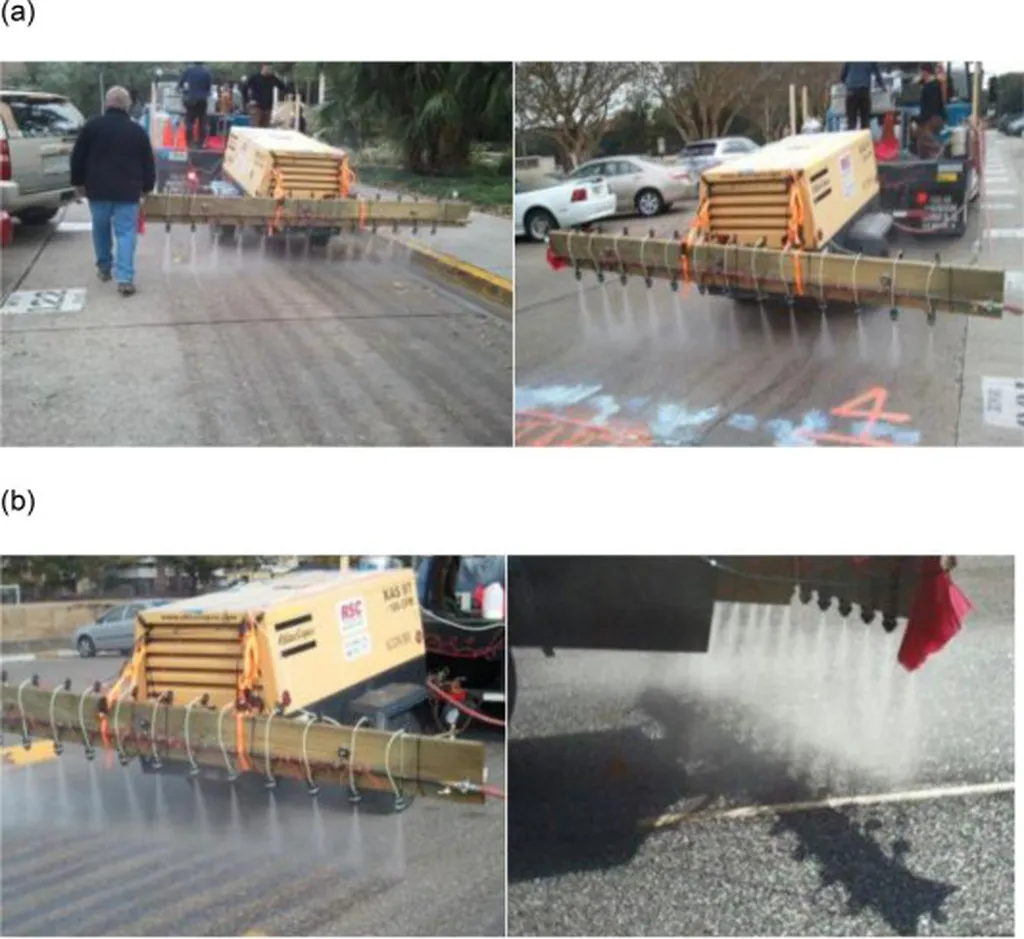In the quest for high-performance materials that can withstand the rigors of modern infrastructure, a team of researchers led by Xin Qiu from the College of Engineering at Zhejiang Normal University has made a significant breakthrough. Their work, published in the journal *Case Studies in Construction Materials* (translated from Chinese as “典型案例:建筑材料”), focuses on the development of a composite modified emulsified asphalt (CMEA) that boasts exceptional compatibility and bonding ability. This innovation could have profound implications for the energy sector, particularly in enhancing the durability and efficiency of road construction and maintenance.
The research team’s journey began with a fundamental question: how can we create an asphalt emulsion that maintains its integrity under various environmental conditions while adhering strongly to different surfaces? To address this, they employed a multi-faceted approach, starting with Fourier transform infrared spectroscopy (FTIR) to elucidate the modification mechanism of CMEA. “Understanding the chemical interactions at play is crucial for designing materials that perform reliably in the field,” Qiu explained.
The team then systematically evaluated the compatibility of their CMEA formulations using storage stability, particle size distribution, and fluorescence microscopy (FM). They found that the addition of styrene-butadiene rubber (SBR) and a waterborne epoxy resin system (WERS) created a flexible-rigid network structure through physical blending. However, the key to optimizing this structure lay in the use of a silane coupling agent (SCA), which enhanced both structural stability and interfacial adhesion through chemical interactions.
One of the most intriguing findings was the delicate balance required in the formulation. “Low dosages of WERS and SCA fail to establish an effective structural network, while excessive amounts lead to rigidity-dominated behavior and hinder the uniform dispersion of modifiers,” Qiu noted. This balance is critical for maintaining the interfacial interaction necessary for high performance.
The team also assessed the bonding ability of their formulations using binder bonding strength (BBS) tests and employed grey relational analysis (GRA) to determine the compatibility indicator most correlated with bonding ability. Their results revealed that a formulation with 10% WERS and 1.5% SCA was optimal for high-temperature conditions, while a formulation with 10% WERS without SCA performed better under low-temperature conditions.
The implications of this research for the energy sector are substantial. High-performance CMEA could lead to more durable and efficient road construction, reducing maintenance costs and improving safety. Moreover, the balanced consideration of smaller particle size distribution and greater bonding ability could pave the way for the design of other high-performance materials in the future.
As the world continues to demand more from its infrastructure, innovations like this one will be crucial in meeting those demands. The work of Xin Qiu and his team serves as a testament to the power of careful scientific inquiry and the potential it holds for transforming industries.

